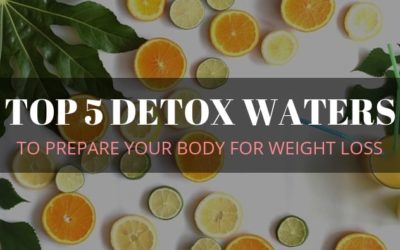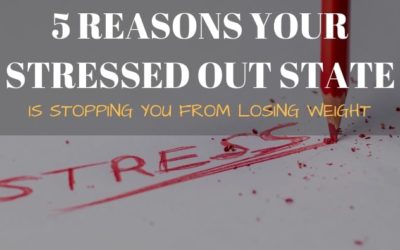Complete Beginners Guide to Plant Based Proteins
When you think of protein powder you probably get thoughts of some big buff guy at the gym. This is a really negative stigma surrounding protein powder when it comes to both women, and weight loss.
The reality is that protein powders are an incredible way to increase your protein intake and reduce the number of calories you consume throughout the day.
With the rising of vegan and plant-based diets, which are GREAT for you, there is an increasing risk that you will not consume the protein your body needs to function properly.
You need to fill some of the void removing meat from your diet has created. And we’ve got you covered with this article, including our favorite plant-based protein powders for women!
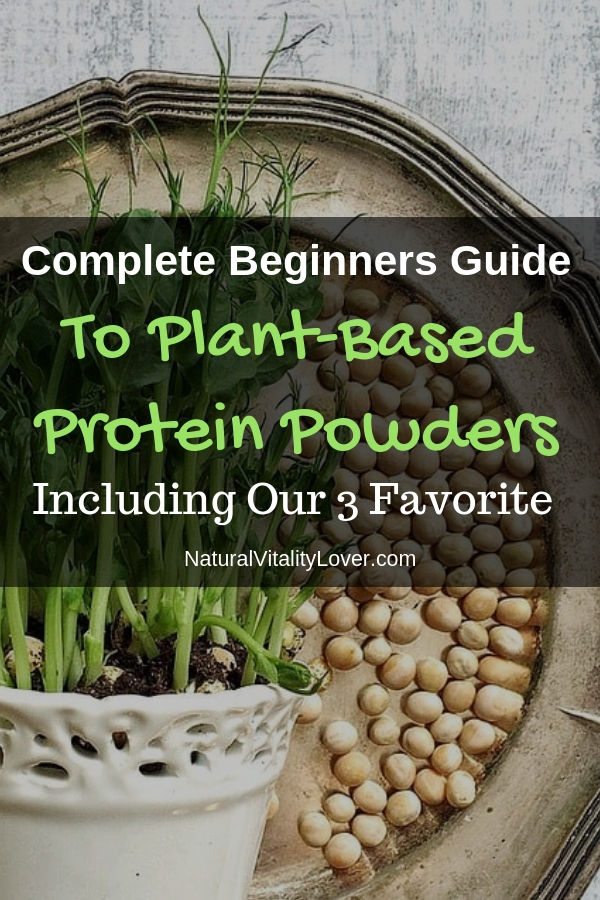
Types of Protein Powder
There are generally five main types of protein powder, these are:
- Whey
- Hemp
- Pea
- Soy
- Brown Rice
Some of these are mixed together to create blends of protein which we will also look at. This is generally more common in plant-based protein powders as you typically need a few different types to create a complete protein
A complete protein is one that contains all the essential amino acids. Essential amino acids are ones that the body must get from food as
If you enjoy this post be sure to follow us on Pinterest for more awesome content using the button below.
Download Your FREE 3 Week Diet Weight Loss Guide Today!
Get your FREE guide to losing weight and maintaining weight loss with the 3 Week Diet.
Whey Protein Powder
Whey protein powder is the most common on the market and is included in this list for completeness only. Whey is derived from milk which makes it inherently incompatible with a plant-based or vegan diet.
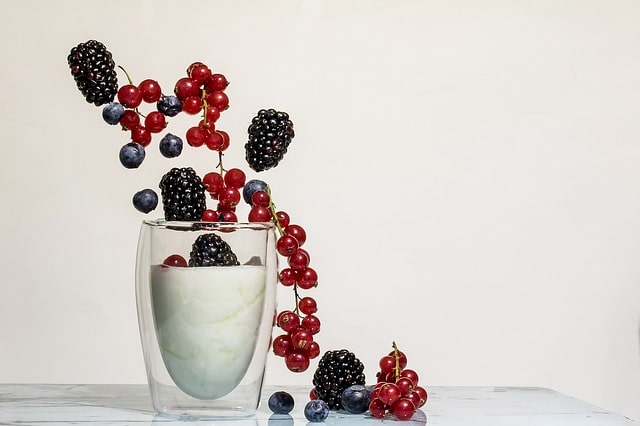
When you hear guys at the gym talking about protein powder, they’re talking about whey.
But do not fear. There are plenty of options for plant-based dieters!
Hemp Protein Powder
The health benefits of hemp are really starting to come into their own with places around the world now starting to legalize its sister plant marijuana.
Hemp protein powder is one of the best sources of plant-based protein nature has to offer. It contains all nine essential amino acids and is one of the few plant-based complete proteins.
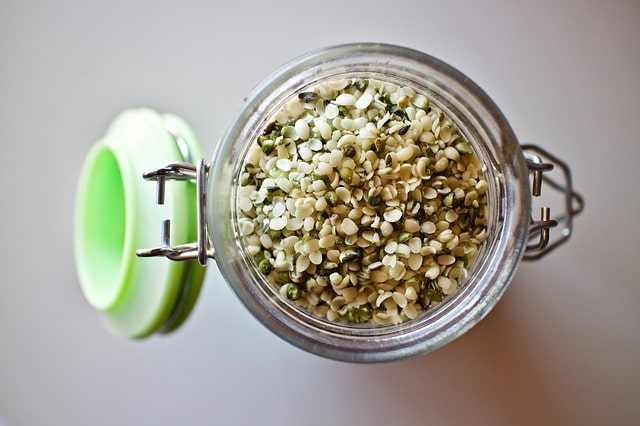
It has a
Hemp protein powder is derived from the seeds of the hemp plant.
The Downsides to Using Hemp Protein Powder
Due to its more natural
This also means that it doesn’t blend as well into liquids and can be a bit ‘sandy’. It performs best when blended with frozen fruits, ice, or when you use it to give a protein boost to your meals, such as having it on your granola in the morning.
Our favorite hemp protein powder
This protein is unflavored and the taste can be a bit full on if you’re not prepared.
We recommend mixing it with some vanilla to balance the taste out.
This hemp protein is packed full of fiber which is fantastic for gut health.
Added bonus: it’s 100% hemp protein so there is no need to read normally long and confusing ingredients lists to know what you’re really putting in your body!
Essential information
Protein sources: 100% Hemp
Also contains: No additives
Flavors: Chocolate and Natural
Macro Nutrients Per Serving: 15g protein, 9g carbs, 3g fat
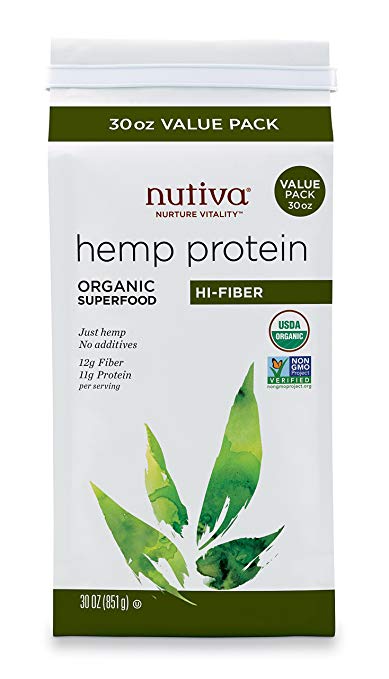
Pea Protein Powder
When we talk about pea protein your mind might start to imagine the cute sweet peas you sometimes have for dinner.
The reality is that pea protein comes from field peas which are the dried yellow or green peas you make soup with.
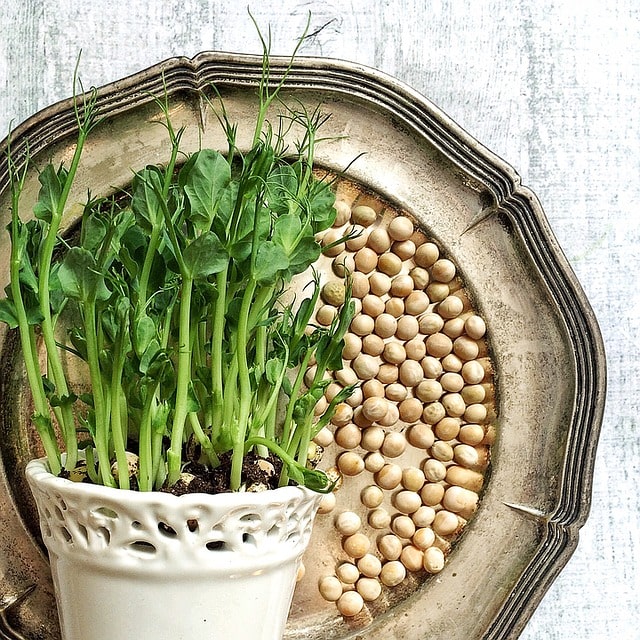
This is due to the fact that field peas have about four times as much protein as sweet peas.
Unlike hemp protein, pea protein is slightly more refined to create a more pure protein powder with about 80% of the powder being protein compared to about a 5% protein content in field peas.
This process also makes it easier for your body to digest.
The Downsides to Using Pea Protein Powder
Pea protein doesn’t contain all essential amino acids which means you need to make sure you’re getting the others from your food.
However, this can be addressed by using a blended protein which we will look at in a little bit.
Our Favourite Pea Protein
This pea protein mixes into water really easily and comes in a few different flavors.
If it’s your first time trying pea protein we recommend you get one of the flavored ones as it can be a bit overwhelming on its own!
Added bonus: it’s 100% pea protein so there is no need to read normally long and confusing ingredients lists to know what you’re really putting in your body!
Essential information
Protein sources: 100% Pea Protein
Also contains: No additives
Flavors: Chocolate Fudge Brownie, French Vanilla, Natural
Macro Nutrients Per Serving: 25g protein, 1g carbs, 1g fat
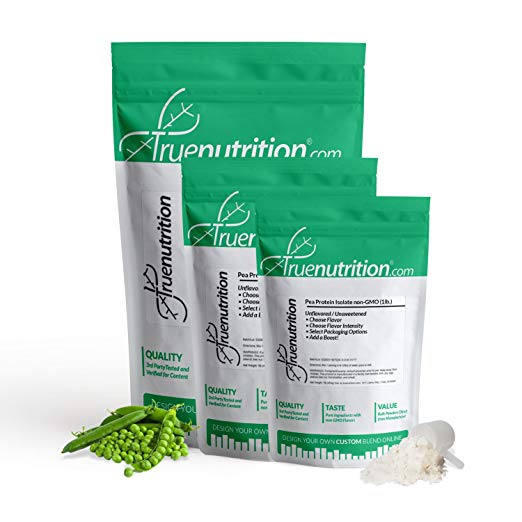
Soy Protein Powder
Soy is one of the most popular vegan and plant-based protein powders and has been in use since about 1960. Many foods use soy protein for its functional properties.
It typically has about a 90% protein content and is derived from defatted soy flour.
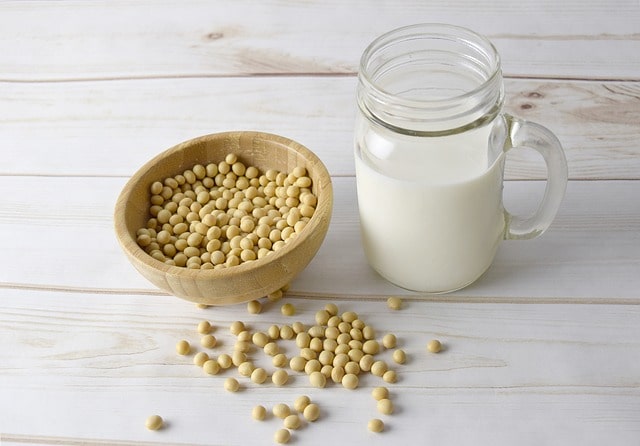
It has the best mixability of all plant-based protein powders so is great if you are out and about and just using a shaker.
The Downsides to Using Soy Protein Powder
We’re not big fans of soy due to the presence of phytoestrogens.
There are many studies into soy and its negative health effects. Some people are sensitive to soy and it can actually cause weight gain as well as increased levels of estrogen.
You’re probably thinking: “but there are civilizations that have been consuming soy for centuries!?”
And you would be right. But these civilizations have been consuming fermented soy such as miso in Japan, soy sauce all over Asia, and tempeh in Indonesia.
The fermentation process destroys the lectins and phytic acid in fresh soy.
Our Favourite Soy Protein
While we’re not big proponents of soy (for reasons mentioned above) we took one for the team and tested a few of the different options out there – this one was our favorite.
This soy protein mixes into water easily and has a few different flavors to try.
Added bonus: it’s 100% soy protein so there is no need to read normally long and confusing ingredients lists to know what you’re really putting in your body!
Essential information
Protein sources: 100% Soy Protein
Also contains: No additives
Flavors: Creaming Vanilla, Natural
Macro Nutrients Per Serving: 13g protein, 0.5g carbs, 0.5g fat
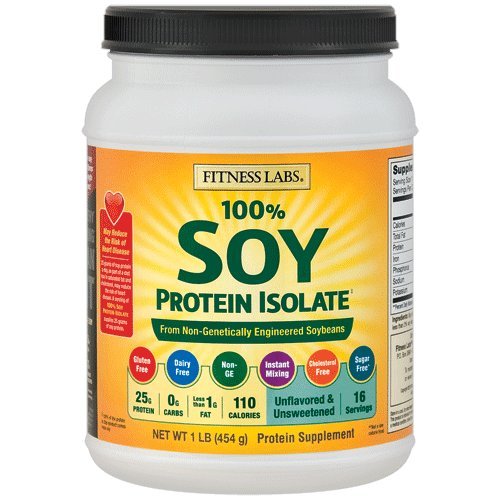
Brown Rice Protein Powder
Now this one will have a few of you up in arms!
Rice is a CARB!

And you’re right. But rice protein, just like pea protein, is quite different from what you see on your plate for dinner.
To make rice protein powder over 80% of the starch content is removed which makes it a really poor source of carbs.
All in all, most brown rice proteins are about 80% protein.
It’s also one of the easiest on your gut as its free from a lot of ingredients that cause gastric distress. This makes it FODMAP friendly!
The Downsides to Using Brown Rice Protein Powder
It doesn’t contain all essential amino acids and so you need to make sure you are getting these from other foods you are eating.
Luckily, having rice and pea protein together actually creates a complete protein.
Rice protein is similar to hemp protein in that it can be a bit grainy when mixed with liquids. We recommend using it in fruit smoothies, or over other foods such as oats or granola.
Our Favourite Brown Rice Protein
This protein can be a bit of a rude awakening if it’s your first time as it is completely unsweetened. However, once you’ve had it a few times you get used to it.
Rice proteins can be a bit grainy when mixed with liquids but this one mixes a lot better than others on the market.
Added bonus: it’s 100% brown rice protein so there is no need to read normally long and confusing ingredients lists to know what you’re really putting in your body!
Essential information
Protein sources: 100% Brown Rice Protein
Also contains: No additives
Flavors: Natural
Macro Nutrients Per Serving: 25g protein, 4g carbs, 0.5g fat

Blended Protein Powder
There are many plant-based and vegan protein powders that have multiple sources of plants included in them such as soy and rice, or some other combination.
This is due to a number of reasons including the following.
It creates a complete protein giving your body all the essential amino acids it needs.

It creates a better texture to your shake. As mention with a couple of the options above, some plant-based protein powders don’t mix with liquids very well. By combining those with ones that do it can create a much more enjoyable shake.
Ultimately a protein powder is only good for you if you use it, so creating an enjoyable texture is key to using the supplement into your diet – even if you get fewer nutrients from it.
The Downsides to Using Blended Protein Powder
There are not many downsides of blended protein powders.
However, we just recommend knowing what is in the blend you chose in light of the above information so you are not accidentally introducing something to your diet you would rather not have.
Our three favorite plant-based blended protein powders
Orgain Organic Protein
Possibly the best-tasting plant-based and vegan protein powder on the market.
The drawback is that it does contain more carbs than most other plant-based and vegan protein powder on the market. So make sure you understand what your daily carb intake is and how much this eats into it.
Added bonus: it doesn’t contain any additives so there is no need to read normally long and confusing ingredients lists to know what you’re really putting in your body!
Essential information
Protein sources: Brown rice, chia, hemp, and pea
Also contains: No added ingredients in this formula that give it any edge over its competitors
Flavors: Vanilla Bean, Chocolate Fudge
Macro Nutrients Per Serving: 21g protein; 5g sugar; 15g carbs
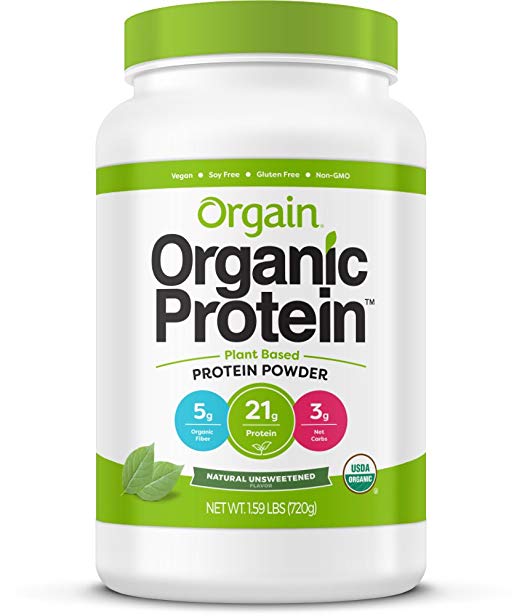
Ora Organic
Possibly the most vitamin and nutrient-packed plant-based and vegan protein powder on the market.
The drawback is that because of this it also comes with a bigger price tag and also only comes in one flavor.
Essential Information
Protein sources: A large variety including hemp, chia seeds, pea, flax, quinoa, spirulina, and much more
Also contains: Fat-soluble vitamins, protein-digesting enzymes, and live probiotics
Flavors: Vanilla Chai
Macro Nutrients Per Serving: 19g protein; 1g sugar; 6g carbs

Vega Essentials
In our opinion the best plant-based and vegan protein powder on the market.
It’s really low in sugar and carbs and its packed with greens (2 servings of greens in a scoop!)
It is a little more expensive than its competitors. However, based on the additional benefits it comes with we’re not complaining!
Essential information
Protein sources: 13 different raw, organic sprouts
Also contains: 2 servings of greens, including kale, spinach, broccoli and alfalfa
Flavors: Vanilla, Chocolate, Berry
Macro Nutrients Per Serving: 20g protein; 2g sugar; 6g carbs
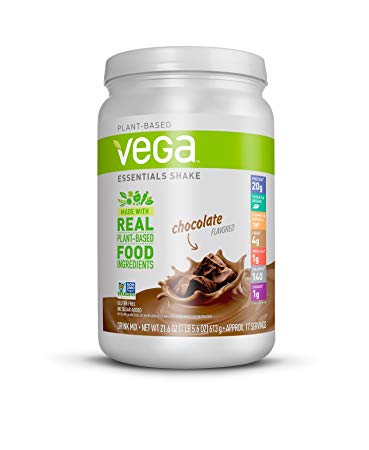
In Summary
Selecting a protein powder is about finding a balance between taste and nutrients. Often the protein powders that have the best taste are lacking in nutrients and vis
We recommend you try a few different kinds until you find the one best for you. Remember that if its nutrient-rich and you don’t use it it’s useless. So, it could be better for you to use one that’s a bit less nutrient rich and better tasting.
We hope that this article helps narrow down the options for you based on our trial and error.
Leave a comment below if you enjoyed this article or have any questions you’d like answered!
If you enjoyed this post be sure to follow us on Pinterest for more awesome content using the button below.
RECENT BLOG POSTS
Why Don’t You Feel Dehydrated When You Know You’re Not Drinking Enough Water?
Most people think they are drinking enough water because we drink when we get thirsty. However, our bodies become imbalanced when the mechanism that signals thirst shuts down. In the following article, we hope you learn why your body stops signaling thirst, how to...
Top 5 Detox Waters for Preparing Your Body for Weight Loss
When it comes to conversations around weight loss water is generally not a topic of conversation. And that’s because it can be mundane – drink more they say – and that’s about where the conversation stops. Most people drink when they are thirsty and justify their...
5 Reasons Your Stressed-Out State Is Stopping You from Losing Weight
Have you ever found that despite your exercise and nutrition plans you’re still not reaching your weight loss goals? Maybe your struggling to stick to your exercise and nutrition plan. Or even worse – maybe your actually gaining weight. Have you ever sat back and...
Download Your FREE 3 Week Diet Weight Loss Guide Today!
Get your FREE guide to losing weight and maintaining weight loss with the 3 Week Diet.


